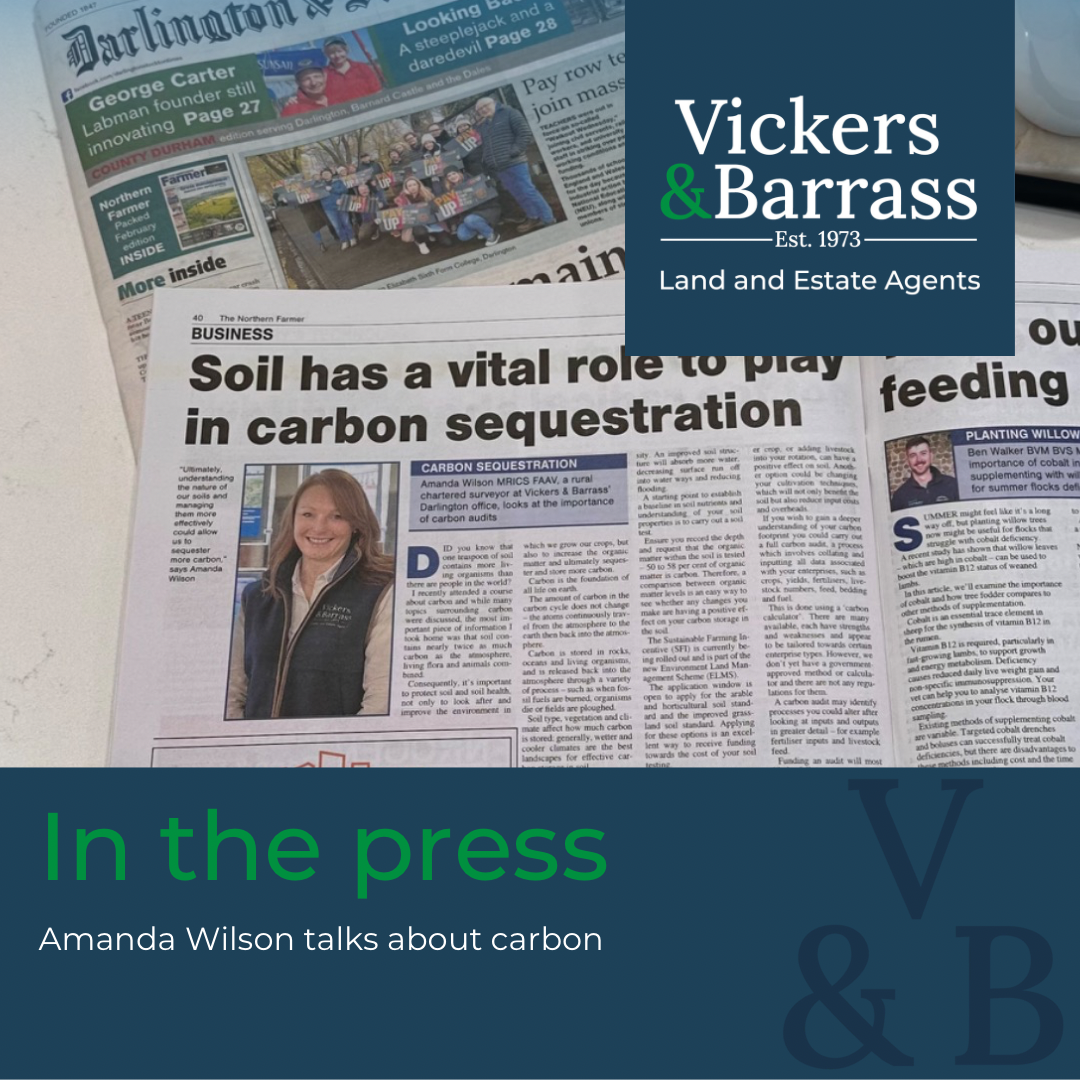Amanda Wilson has written the below article for The Northern Farmer magazine this month and explains why it’s important to protect soil and soil health.
Did you know that one teaspoon of soil contains more living organisms than there are people in the world?
I recently attended a course about Carbon and whilst many topics surrounding carbon were discussed, the most important piece of information I took home was that soil contains nearly twice as much carbon as the atmosphere, living flora and animals combined. Consequently, it is important to protect soil and soil health, not only to look after and improve the environment in which we grow our crops but also to increase the organic matter and ultimately sequester and store more carbon. Carbon is the foundation of all life on earth, the amount of carbon in the carbon cycle does not change, the atoms continuously travel from the atmosphere to the Earth then back into the atmosphere. Carbon is stored in rocks, oceans and living organisms, it is released back into the atmosphere through a variety of process such as when fossil fuels are burned, organisms die, or fields are ploughed. Soil type, vegetation and climate affect how much carbon is stored; generally wetter and cooler climates are the best landscapes for effective carbon storage in soil.
Creating woodland, scrub and improving hedgerows will help to sequester more carbon but ultimately understanding the nature of our soils and managing them more effectively could allow us to sequester; remove carbon from the atmosphere and store more carbon. If we can improve soil health, structure, organic matter and biology this will hopefully improve crop yields and also have a positive effect on the environment by improving water quality and biodiversity. An improved soil structure will absorb more water, decreasing surface run off into water ways and reducing flooding.
A starting point to establish a baseline in soil nutrients and understanding of your soil properties is to carry out a soil test. Ensure you record the depth and request that the organic matter within the soil is tested. 50% – 58% of organic matter is carbon. Therefore, a comparison between organic matter levels is an easy way to see whether any changes you make are having a positive effect on your carbon storage in the soil.
The Sustainable Farming Incentive (SFI) is currently being rolled out and is part of the new Environment Land Management Scheme (ELMS). The application window is open to apply for the arable and horticultural soil standard and the improved grassland soil standard. Applying for these options is an excellent way to receive funding towards the cost of your soil testing.
At an introductory level you must complete a soil assessment and management plan, test soil organic matter, add organic matter and minimise bare ground (grassland standard) / have green cover (arable standard). At an intermediate level you must complete all of the introductory actions and establish herbal leys (grassland standard) / green cover and multi species cover crops (arable standard). We can offer advice on whether you will be eligible and if SFI will be compatible with any existing stewardship agreements you have, as well as compiling an application and producing a soil management plan. Changes to your current farming system such as introducing a herbal lay or cover crop, or adding livestock into your rotation can have a positive effect on soil. Another option could be changing your cultivation techniques, this will not only benefit the soil but also reduce input costs and overheads.
If you wish to gain a deeper understanding of your carbon footprint you could carry out a full carbon audit. The process involves collating and inputting all data associated with your enterprises (crops, yields, fertilisers, livestock numbers, feed, bedding, fuel etc). This is done using a ‘carbon calculator’, there are many available, each have strengths and weaknesses and appear to be tailored towards certain enterprise types. However, we don’t yet have a government approved method or calculator and there aren’t any regulations for them. A carbon audit may identify processes you could alter after looking at inputs and outputs in greater detail for example fertiliser inputs and livestock feed. Funding an audit will most likely fall to you at present and therefore may not be a viable option unless you would like to demonstrate to consumers that you are carbon neutral or working towards it. However, if you are located within a National Park or Area of Outstanding Natural Beauty there is funding available through the Farming in Protected Landscapes Scheme which will contribute towards a carbon audit, we can advise further on this, if interested.
Please call Amanda should you wish to discuss this topic further 01325 728084.





